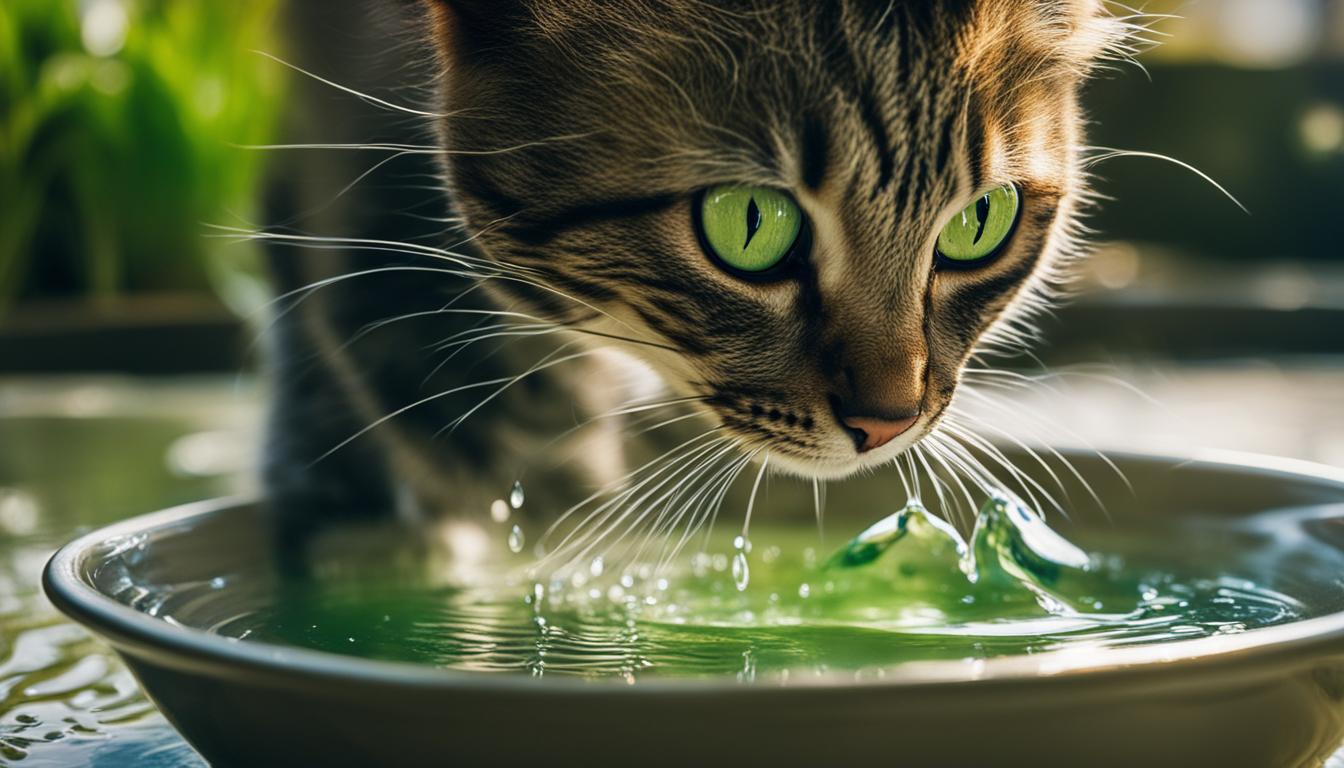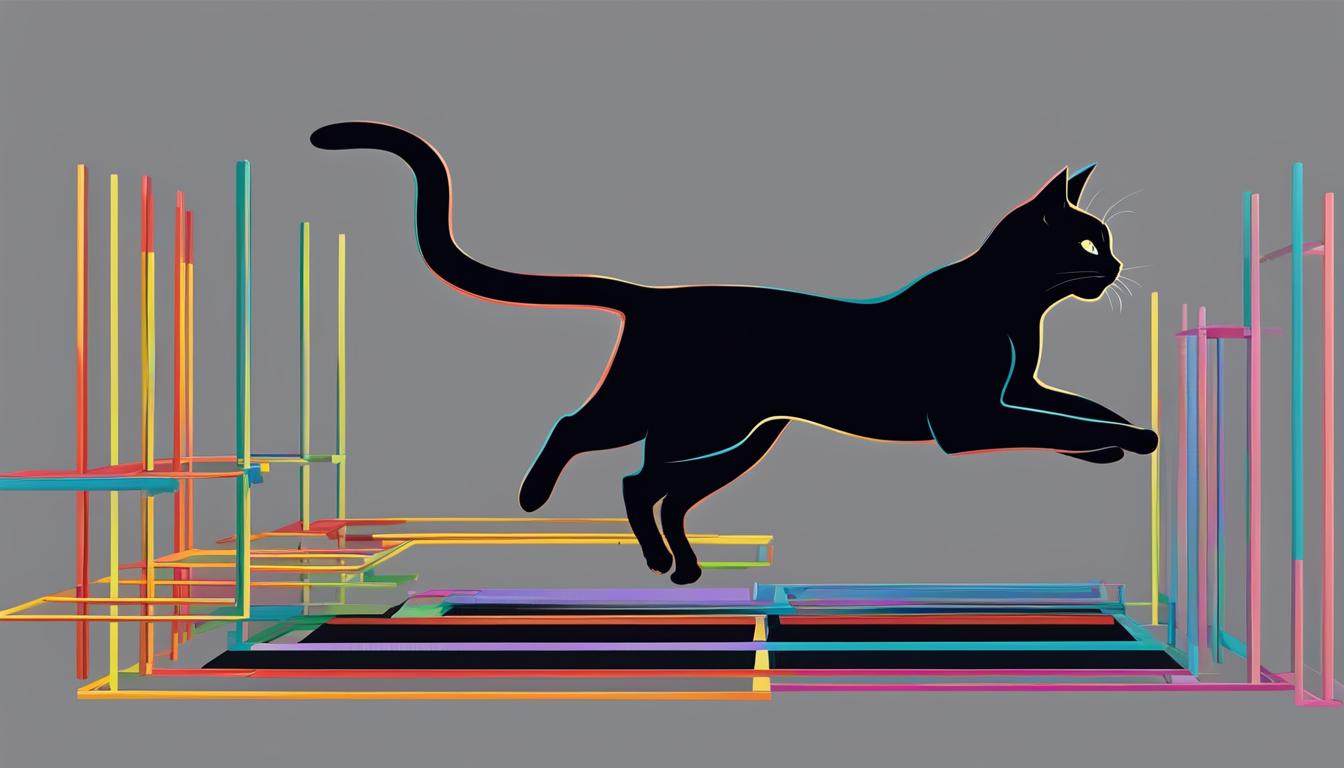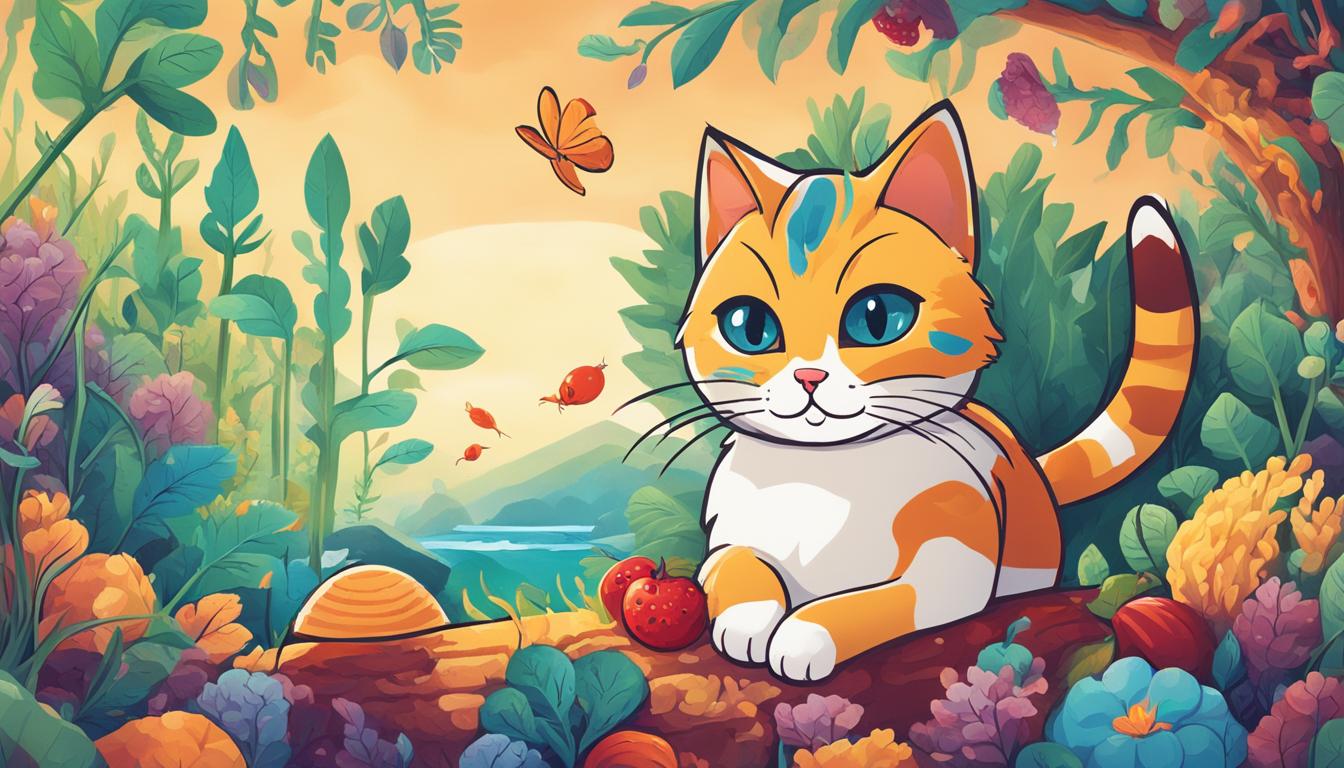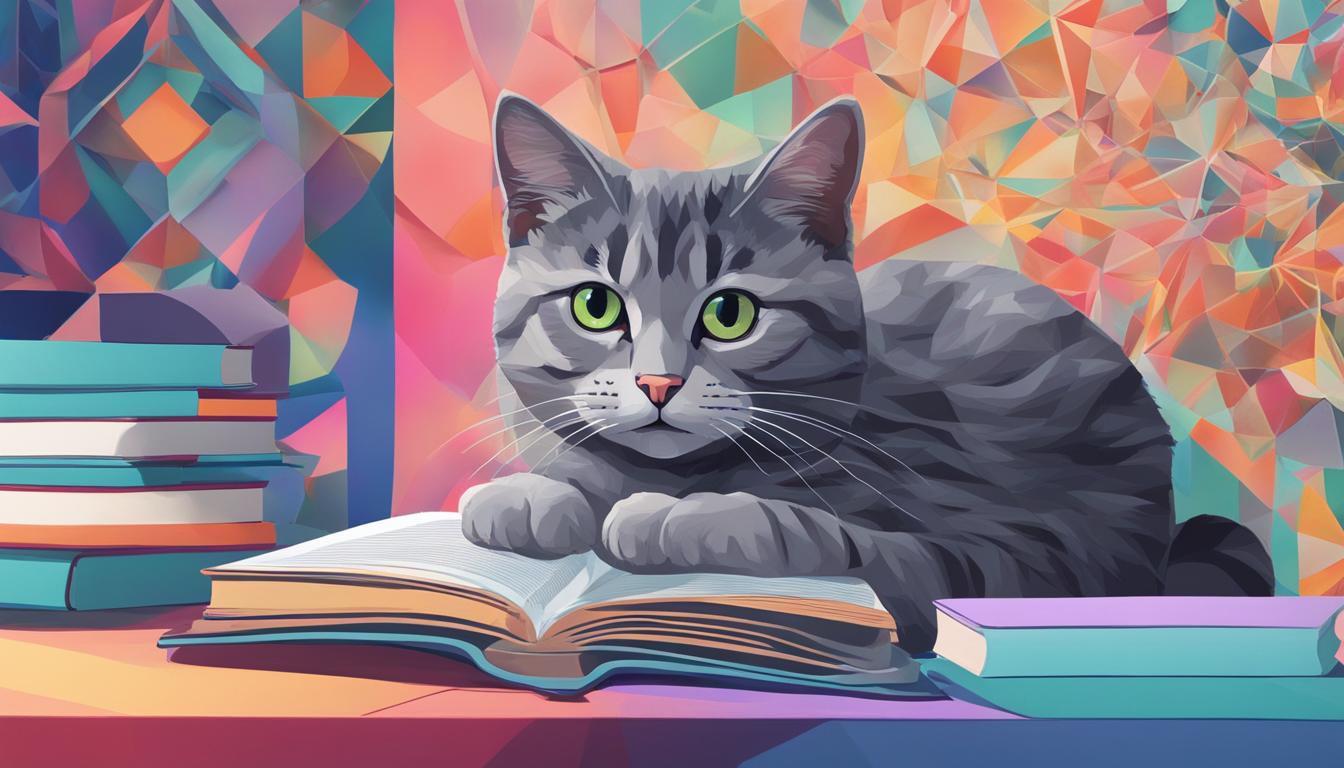Hello there, fellow cat lovers! Today, I want to talk about the often-overlooked topic of feline hydration. You see, keeping our furry friends hydrated is not just a matter of quenching their thirst. It plays a vital role in their overall health and well-being. So, let’s dive into the importance of hydration in cats, water intake recommendations, and the signs of dehydration.
Hydration is like a superhero for our feline companions. It helps with temperature regulation, digestion, joint lubrication, and nutrient delivery. Just like us, cats need to consume an adequate amount of water every day to stay healthy. As a general rule of paw, cats should drink about 4 ounces of water per five pounds of their lean body weight.
But what happens if our furry friends don’t get enough water? Dehydration can wreak havoc on their little bodies, leading to issues like decreased circulation, temperature regulation problems, cardiac arrhythmias, and even neurologic dysfunction. Yikes! To top it off, cats can be sneaky about showing signs of dehydration, making it essential for us to stay vigilant.
So, how can we tell if our cats are dehydrated? Look out for common signs such as lethargy, weakness, poor appetite, dry mucous membranes, and sunken eyes. It’s also important to note that certain health conditions like chronic kidney disease, diabetes, vomiting, diarrhea, and hyperthyroidism can cause increased water loss and dehydration in cats.
Key Takeaways:
- Hydration is crucial for cats’ overall health and well-being.
- Cats should consume about 4 ounces of water per five pounds of lean body weight per day.
- Dehydration can lead to health problems like decreased circulation, temperature regulation issues, cardiac arrhythmias, and neurologic dysfunction.
- Common signs of dehydration in cats include lethargy, weakness, poor appetite, dry mucous membranes, and sunken eyes.
- Chronic kidney disease, diabetes, vomiting, diarrhea, and hyperthyroidism can cause increased water loss and dehydration in cats.
The Role of Water in Preventing Health Issues
Water plays a crucial role in maintaining the health and well-being of cats. One effective way to ensure that cats stay hydrated is by incorporating wet food into their diet. Wet food has a high water content, which can help to increase their overall water intake. This is particularly beneficial for cats who may not be inclined to drink water from a bowl.
Proper hydration is essential in preventing urinary tract issues in cats. When cats consume an adequate amount of water, it promotes frequent urination, reducing the risk of crystal formation and urinary tract infections. Additionally, maintaining proper hydration supports kidney health. Dehydration can contribute to the development and progression of kidney diseases, so it is crucial to ensure that cats have access to an ample supply of fresh water.
Promoting Hydration with Wet Food
Wet food not only helps to increase water intake in cats but also provides them with a balanced and nutritious diet. It is important to choose high-quality wet food that is specifically formulated for feline health. By incorporating wet food into their feeding routine, cat owners can help prevent urinary tract issues and support kidney health in their furry companions.
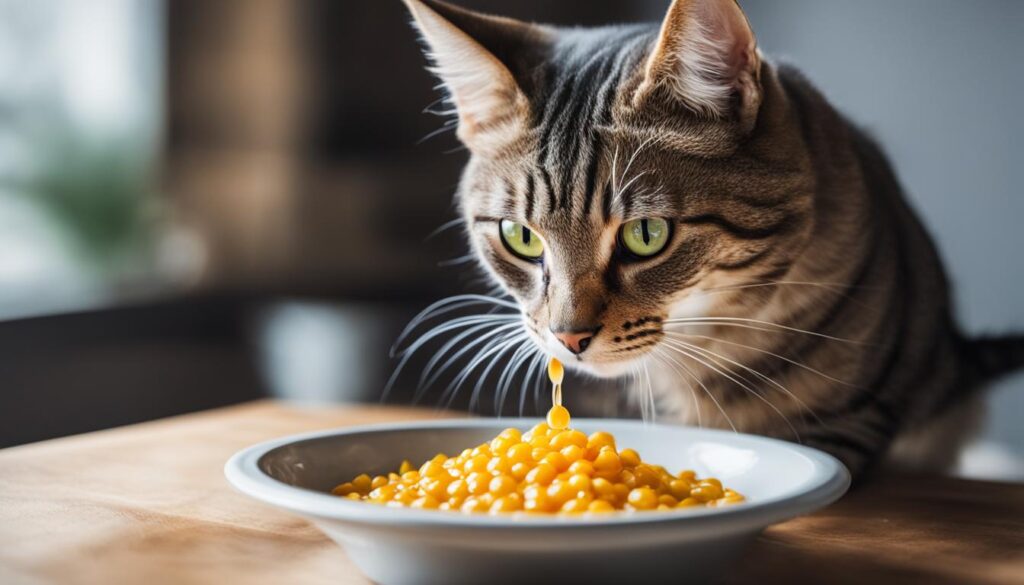
| Benefits of Wet Food for Cats | Preventing Health Issues |
|---|---|
| High water content | Reduces the risk of urinary tract issues |
| Provides balanced nutrition | Supports kidney health |
| Appealing taste and texture | Encourages water intake in finicky cats |
In conclusion, water plays a vital role in preventing health issues in cats. Incorporating wet food into their diet can help increase their water intake and promote overall hydration. This, in turn, helps to prevent urinary tract issues and supports kidney health. By providing cats with fresh water and quality wet food, cat owners can ensure that their furry friends stay healthy and hydrated.
Encouraging Hydration in Finicky Cats
When it comes to drinking water, some cats can be quite finicky. As a cat owner, it’s essential to encourage and ensure proper hydration for your feline friend. Here are some strategies to help finicky cats drink more water:
1. Multiple Water Bowls:
Place multiple water bowls in different easily accessible locations around your home. Cats are more likely to drink if they have convenient options. Experiment with different types of bowls, such as shallow dishes or wide brimmed cups, to see what your cat prefers.
2. Water Fountains:
Consider investing in a cat water fountain. The flowing water can be more enticing and appealing to cats, encouraging them to drink more. The constant movement also helps to keep the water fresh and oxygenated, making it more enjoyable for your feline friend.
3. Monitor Water Consumption:
Keep an eye on your cat’s water consumption. Check the water levels in their bowls regularly to ensure they are drinking enough. If you notice a significant decrease in water intake, it might be a sign of an underlying health issue and should be discussed with your veterinarian.
Additionally, you can try adding water to your cat’s wet food. This not only increases their water intake but also enhances the flavor and texture, making it more appealing to finicky eaters. You can also flavor their water with a small amount of tuna water or low sodium chicken broth to make it more enticing.
By implementing these strategies, you can encourage your finicky cat to stay hydrated and maintain optimal health.
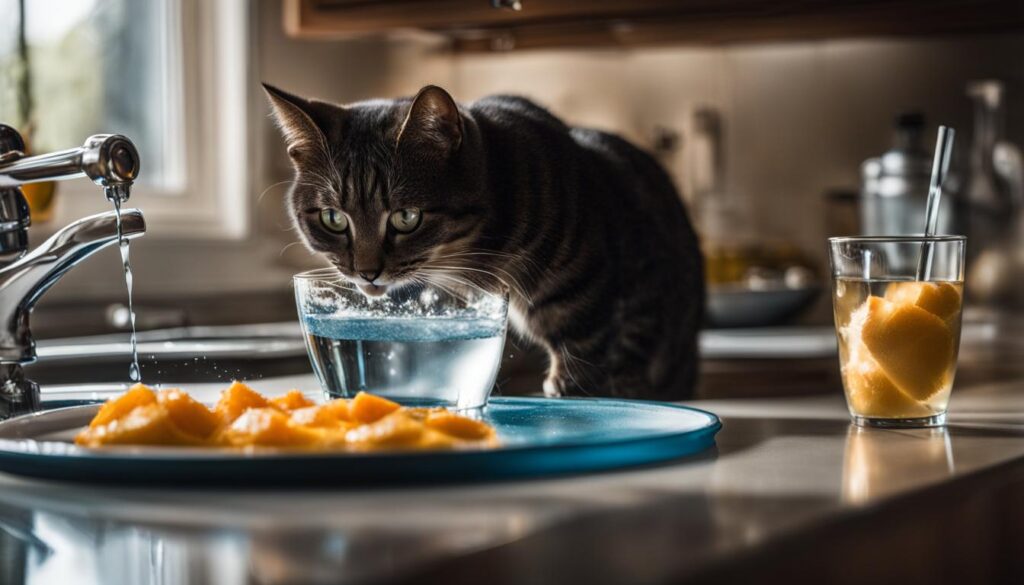
Recognizing and Addressing Dehydration in Cats
It’s crucial for cat owners to be able to recognize the signs of dehydration in their feline companions. Some common indicators include lethargy, decreased appetite, dry skin, and sunken eyes. Additionally, checking the moisture level of a cat’s gums and observing their litter habits can provide further clues about their hydration status. If dehydration is suspected, it’s important to consult a veterinarian promptly for proper diagnosis and treatment.
Intravenous or subcutaneous fluid therapy may be necessary to restore hydration levels in cats. These methods involve administering fluids directly into the cat’s bloodstream or under their skin, respectively. It’s important to note that overhydration can also be a concern, so it’s crucial to follow veterinary guidance regarding fluid administration. Identifying the underlying cause of dehydration is also essential for optimal veterinary care, as it can help address any underlying health issues contributing to the dehydration.
To monitor a cat’s water consumption, it’s advisable to regularly check the water levels in their bowls. This can provide insight into their drinking habits and help identify any changes that may indicate potential health issues. Monitoring water consumption is especially important for cats with a history of dehydration or those who are prone to urinary tract issues. By keeping a close eye on their water intake, cat owners can take proactive measures to ensure their feline friends stay properly hydrated and maintain optimal health.
| Signs of Overhydration in Cats | Monitoring Cat Water Consumption |
|---|---|
|
|
Conclusion
As I conclude this article, I want to reiterate the importance of feline hydration for our beloved cats. Just like us, cats also rely on water to maintain their overall health and well-being. By ensuring that our feline friends stay adequately hydrated, we can help them lead happier and healthier lives.
It’s crucial to prioritize feline hydration by monitoring their water intake and recognizing the signs of dehydration. Providing optimal water sources, such as fresh water and wet food, can make it easier for cats to meet their hydration needs. Additionally, water fountains and flavored water options can add a little excitement to their daily routine and encourage them to drink more.
Remember, dehydration can lead to various health issues in cats, including urinary tract problems and kidney diseases. By taking proactive measures to promote hydration, we can help prevent these issues and ensure our cats enjoy a high quality of life.
So, let’s raise a virtual toast to our furry companions and their hydration! Cheers to keeping our cats happy, healthy, and always well-hydrated!
FAQ
How much water should my cat drink per day?
Cats should consume about 4 ounces of water per five pounds of lean body weight per day.
What are the signs of dehydration in cats?
Common signs of dehydration in cats include lethargy, weakness, poor appetite, dry mucous membranes, and sunken eyes.
What health issues can dehydration cause in cats?
Dehydration can lead to health problems like decreased circulation, temperature regulation issues, cardiac arrhythmias, and neurologic dysfunction.
Can wet food help hydrate cats?
Yes, wet food, which has a high water content, can help hydrate cats and reduce their need for additional water intake.
How can I encourage my picky cat to drink more water?
Providing multiple water bowls, water fountains, and flavoring their water with tuna water or low sodium chicken broth can make water more appealing to finicky cats.
How can I recognize signs of dehydration in my cat?
Common signs include lethargy, decreased appetite, dry skin, and sunken eyes. Checking gum moisture, skin turgor, and litter habits can also provide clues about hydration status.
When should I consult a veterinarian for dehydration in my cat?
If dehydration is suspected, it’s crucial to consult a veterinarian promptly for proper diagnosis and treatment. Intravenous or subcutaneous fluid therapy may be necessary to restore hydration levels.
What can I do to prevent dehydration in my cat?
Providing fresh water, wet food, water fountains, and flavored water options can help prevent dehydration and promote optimal hydration in cats.

